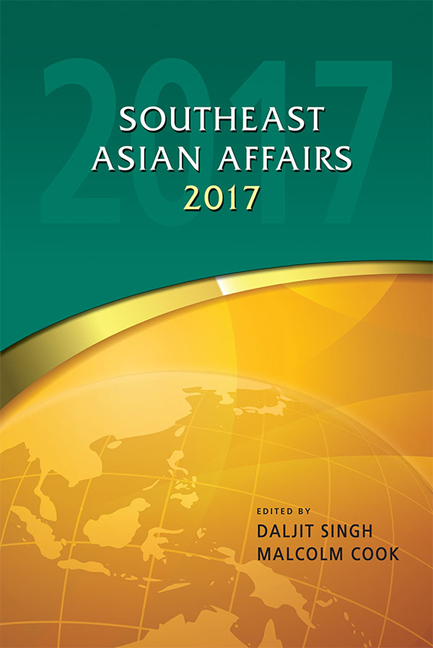2016: A Promising Year for Cambodia?
from CAMBODIA
Published online by Cambridge University Press: 12 January 2018
Summary
Despite its small size and being under a dominant-party system, Cambodia has enjoyed a continuous economic growth rate of at least 7 per cent since 2011, making it one of the fastest growing economies in the world. An analysis of the Cambodian situation in 2016 will contribute to understanding how authoritarian rule may maintain its control over a country. In other words, one can ask, “What are the underlying factors that help to prolong the rule of the Cambodian People's Party (CPP)-led government?” To answer this question this chapter will present an overview of the key economic achievements of the CPP-led government and highlight some important political developments of 2016. It will also examine how this small state managed its foreign relations with important partners such as China, Vietnam, and Japan during the year.
The Economic Situation in 2016
Cambodia, as the Asian Development Bank suggests, has become a new tiger economy in the region, with an annual GDP growth rate of 7 per cent. The GDP is expected to increase from US$18.5 billion in 2015 to US$20.2 billion in 2016. GDP per capita is projected to rise from US$1,228 in 2015 to US$1,325 in 2016. Total foreign direct investment in the second quarter of 2016 was US$15.7 billion, a slight increase from US$13.2 billion in the same period of 2015.
Industry made marked progress, whereas agriculture and services appear to have slowed down in 2016. Cambodian industry still by and large relies on garment and textile exports, which account for approximately 70 per cent of total exports. This year the industry is projected to rise at 11.4 per cent. The services sector, mainly driven by tourism growth, is projected to increase by 6.7 per cent. Tourism per se will go up by 2.2 per cent this year.
The main factor attributed to industrial growth, particularly of garments and textiles, is the shift in the export structure of the garment and textile industry. This sector has steadily shifted up the value chain, from producing low-valueadded products to high-value-added ones. This is demonstrated by the increase in export value, despite the decrease in the quantity of exports. For instance, the export value increased from 10.7 per cent in 2014 to 14.5 per cent in 2015, although the export volume dropped to 13.1 per cent in 2015.
- Type
- Chapter
- Information
- Southeast Asian Affairs 2017 , pp. 133 - 146Publisher: ISEAS–Yusof Ishak InstitutePrint publication year: 2017

